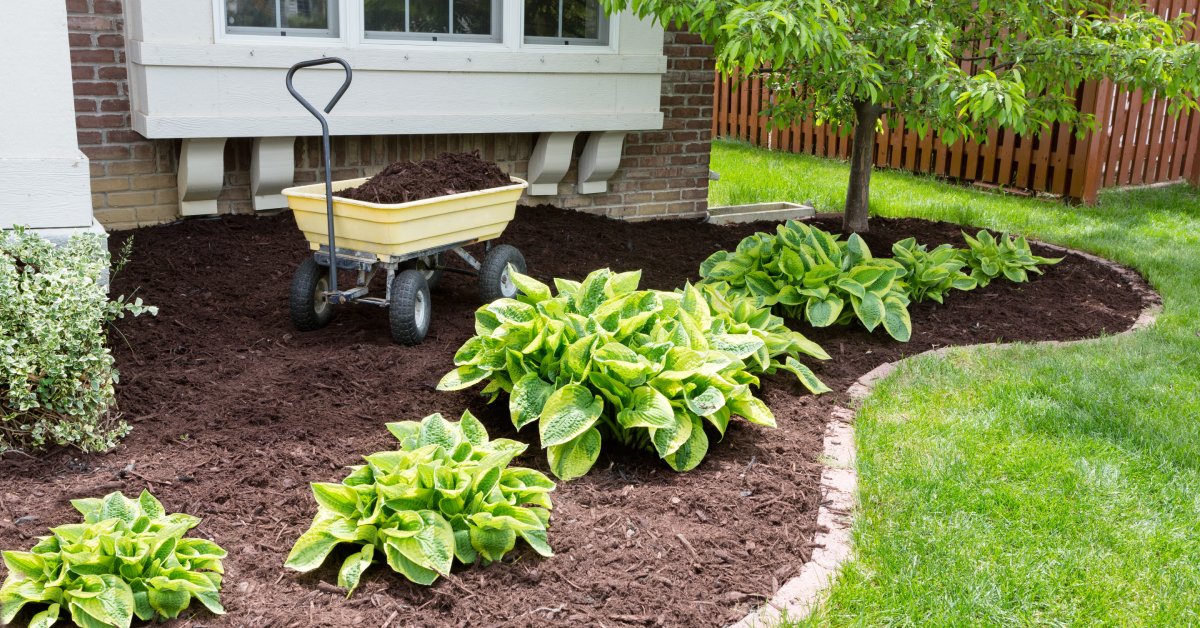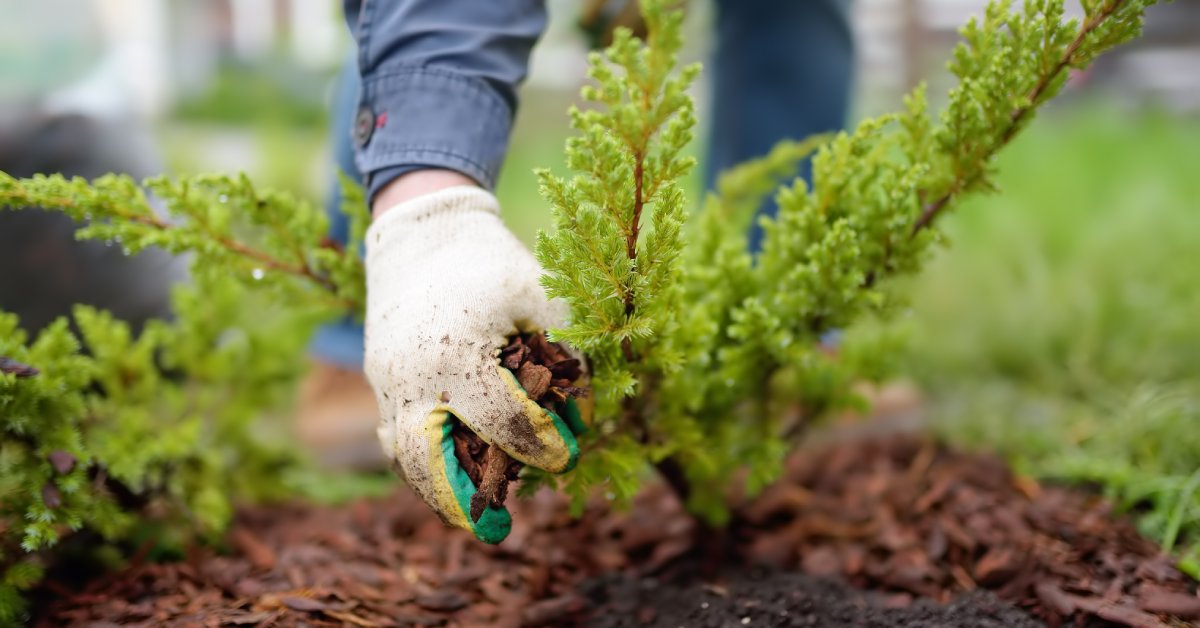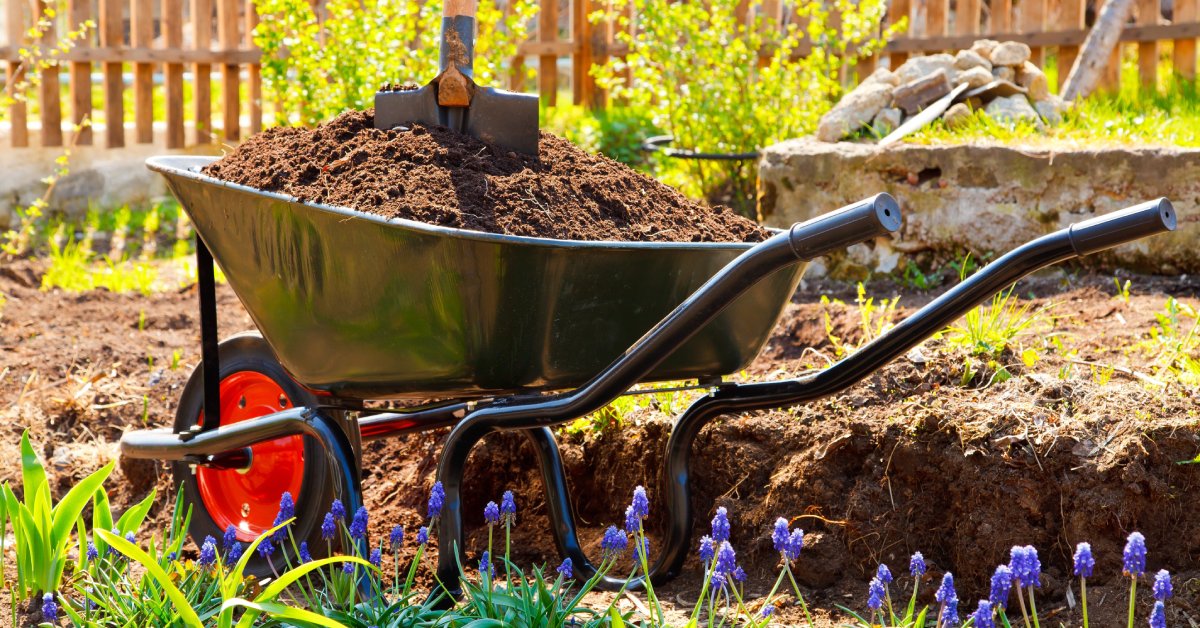As the days get shorter and a chill settles in the air, it’s tempting to hang up your gardening gloves for the season. But taking a little time to prepare your landscape for winter can make a world of difference come spring. Using compost and mulch now protects your plants, enriches your soil, and gives you a head start on a vibrant garden next year.
Think of it as tucking your garden in for a long winter’s nap. A good layer of mulch acts like a cozy blanket, insulating roots from harsh temperature swings, while compost provides the essential nutrients your soil needs to rest and recharge. This simple, two-step process helps your plants survive the cold and emerge stronger and healthier when the weather warms up again. We’re giving you our expert tips for using compost and mulch to create a winter-ready landscape.
Choose the Right Type of Mulch for Winter Protection
When you’re preparing for winter, your goal is to insulate the soil and protect plant roots. Organic mulches like wood chips, straw, or shredded leaves are excellent choices because they create a protective layer that moderates soil temperature.
This prevents the ground from repeatedly freezing and thawing, which can heave plants right out of the soil. We recommend a coarse wood chip mulch for garden beds because it stays put and breaks down slowly, adding organic matter to the soil over time.
Apply Mulch at the Correct Depth To Insulate Soil
One of the most common mistakes people make is applying mulch too thinly or too thickly. For winter protection, aim for a layer that is two to four inches deep. This is enough to insulate the soil without smothering your plants.
A thinner layer won’t provide enough protection from the cold, while a thicker one can trap too much moisture, leading to root rot. Use a rake to spread the mulch evenly around the base of your plants, but be sure to leave a small gap directly around the stems or trunks to prevent moisture buildup and discourage pests.
Use Compost To Enrich Your Garden Beds Before Winter
Fall is the perfect time to give your garden soil a nutrient boost. After clearing out your annuals and vegetables, spread a one to two inch layer of finished compost over the surface. You can gently work it into the top few inches of your garden topsoil with a rake or garden fork.
As the compost breaks down over the winter, it releases vital nutrients, improves soil structure, and encourages beneficial microbial activity. By spring, your soil will be rich, crumbly, and ready for planting.
Protect Perennials by Mulching After the First Hard Frost
Timing is everything when it comes to winterizing perennials. Wait until after the first hard frost has sent your plants into dormancy. Applying mulch too early can delay dormancy, leaving your plants vulnerable to cold damage.
Once the ground lightly freezes, apply a generous layer of mulch around the base of your perennials. This keeps the soil frozen and prevents the freeze-thaw cycles that can damage roots and crowns.
Create a Compost Pile With Fall Leaves and Yard Debris
Don’t let all those autumn leaves go to waste! They are a fantastic ingredient for your compost pile. Here’s how to turn your fall yard cleanup into black gold for your garden:
- Gather Materials: Collect fallen leaves, grass clippings, and other green yard waste.
- Layer Correctly: Alternate your brown layers (leaves, small twigs) with green layers (grass clippings, kitchen scraps).
- Keep It Moist: Your compost pile should feel damp like a wrung-out cloth—water it if it seems dry.
- Turn Regularly: Use a pitchfork to turn the pile every week or two. This aerates the materials and speeds up decomposition.
By next spring or summer, you’ll have a fresh batch of homemade compost ready to use.
Shield Tree Trunks and Shrubs From Winter Pests
Winter is a tough time for wildlife, and hungry critters like rabbits and mice may turn to your trees and shrubs for a meal. The tender bark is especially tempting. Install plastic tree guards or wrap the lower trunks with hardware cloth to protect them.
Make sure the barrier extends from the base of the trunk up to the first set of branches. Also, remember to keep mulch pulled back a few inches from the trunk, as deep mulch can provide cover for pests.
Water Your Plants Deeply Before the Ground Freezes
Even though plants are dormant, their roots still need moisture to survive the winter. Before the ground freezes solid, give your trees, shrubs, and perennials a deep, thorough watering.
This is especially important for evergreens, which lose a lot of moisture through their needles on windy winter days. A good soaking can support a well-hydrated root zone, which helps plants withstand the dry winter air and emerge healthy in the spring.
Mulch Your Vegetable Garden To Prepare for Spring Planting
After you harvest your final crops, it’s a good idea to cover your vegetable garden with a layer of mulch. Shredded leaves, straw, or even a cover crop can work well. This practice prevents soil erosion from winter winds and rain, suppresses weeds, and adds organic matter as it breaks down. When spring arrives, you can either till the mulch into the soil or pull it back to create planting rows in nutrient-rich, prepped soil.
Cover Tender Plants With a Protective Winter Blanket
Some of your less hardy plants, such as roses or certain hydrangeas, might need a little extra TLC to make it through the winter. After the first hard frost, you can create a simple protective structure around them.
A frame made of stakes wrapped in burlap works well. Fill the enclosure loosely with shredded leaves or straw for added insulation. A winter blanket shields them from harsh winds and extreme cold.
Inspect and Replenish Mulch Throughout the Winter Season
Take a walk through your garden on milder winter days to check on your mulch levels. Strong winds and heavy precipitation can sometimes displace mulch, leaving plant roots exposed.
If you see any bare spots, simply add a fresh layer to make sure your plants stay protected. A quick touch-up is all it takes to keep your landscape cozy and secure until spring’s arrival.
Let’s Get Ready for a Beautiful Spring
Putting in a bit of effort now to compost and mulch your landscape is one of the best winter-ready investments you can make for your garden. You’re not just protecting your plants from the cold; you’re actively improving your soil and setting the stage for a lush, healthy, and beautiful yard next year. When spring finally rolls around, you’ll be glad you took these simple steps. Visit Victory Greens for your topsoil and mulch needs. We look forward to watching your spring blooms pop up with the help of a cozy winter blanket.






